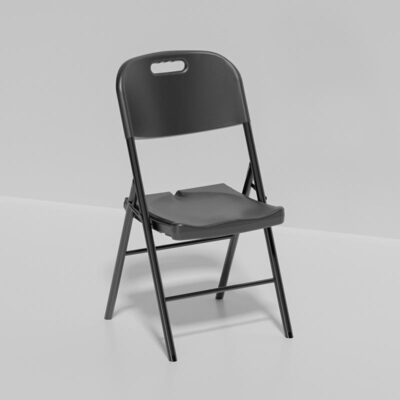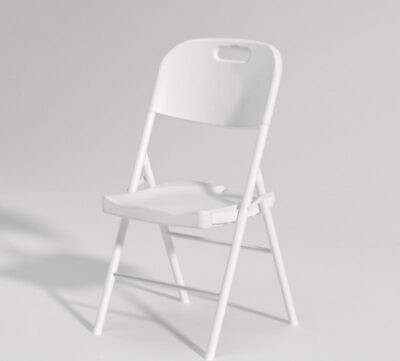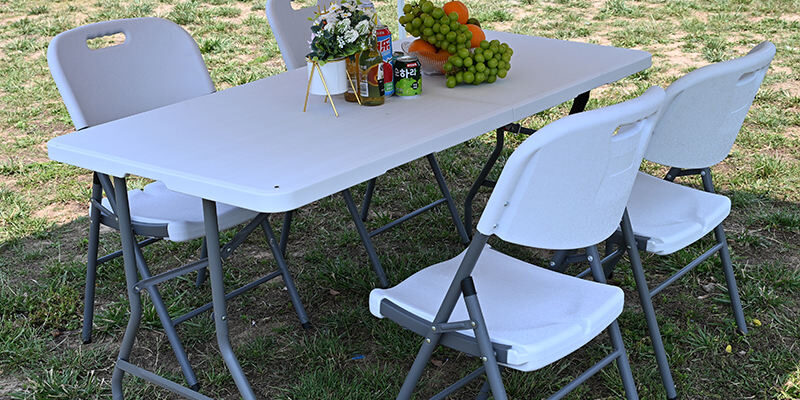High-turn venues such as conference centers, schools, banquet halls, and rental companies face a unique challenge: seating that must be durable, cost-effective, and easy to maintain. Among the many options available, plastic folding chairs have emerged as a practical solution for buyers managing large inventories and frequent seating turnover.
But how do plastic chairs compare with metal, resin, or wood in terms of durability versus cost? This article breaks down the advantages, limitations, and procurement insights buyers need to make an informed decision.
1. Durability in Heavy Use
Plastic folding chairs are designed with resilience in mind. Most are manufactured with polypropylene (PP) or polyethylene (PE), which offer excellent impact resistance. Some high-grade models also incorporate glass-fiber reinforcement, further extending lifespan.
Key durability features include:
Impact resistance: Survives drops and rough handling better than wood or resin.
Moisture resistance: Unlike metal, no rust risk when used outdoors.
Stackability: Lightweight material reduces stress on hinges during stacking.
For high-turn venues that reset hundreds of chairs daily, this durability translates into fewer replacements and lower total ownership costs.
2. Cost Advantages for Large Venues
Plastic folding chairs typically carry a lower initial purchase cost compared to resin or wood. For venues purchasing thousands of units, even a $1–2 price difference per chair adds up significantly.
Cost benefits include:
Lower upfront investment for bulk procurement.
Reduced transport costs due to lighter weight.
Less frequent replacement, saving long-term capital.
In environments where chairs are frequently damaged or lost, the cost-to-replace ratio makes plastic folding chairs particularly attractive.
3. Limitations to Consider
While plastic chairs excel in durability and affordability, buyers must balance limitations:
Heat retention: Prolonged sun exposure may warp cheaper plastics.
Aesthetics: Less premium-looking compared to wood or resin for weddings or upscale events.
Weight capacity: Standard plastic models often support less weight than reinforced metal options.
For upscale venues, combining plastic chairs for back-of-house use with resin or wood for guest-facing events can be an effective strategy.
4. Lifecycle Cost Analysis
The true cost of chairs is not the purchase price but the lifecycle cost. Plastic folding chairs excel in this area because:
They require minimal maintenance.
They have lower damage rates in transit.
They last longer in high-turn settings where chairs are constantly moved.
Many buyers report 20–30% lower lifecycle costs with plastic folding chairs compared to other materials.
5. Partnering with Reliable Suppliers
Not all plastic chairs are created equal. Buyers should prioritize suppliers with impact testing, UV stabilization, and verified weight capacity data. Many procurement managers secure supply from Folding Chairs Wholesale, ensuring consistency across bulk orders.
For more specialized assortments, such as reinforced PP or UV-stable versions, checking ranges via Plastic Folding Chairs gives buyers access to models designed specifically for high-turn venues.
6. Practical Applications in Venues
Schools & universities: Lightweight design enables students or staff to quickly reset classrooms.
Banquet halls: Cost savings from bulk purchasing increase ROI on frequent rentals.
Conference centers: Durable plastic shells withstand thousands of stacking cycles.
Outdoor events: Water- and rust-resistant features ensure reliability in unpredictable weather.
Final Thoughts
For high-turn venues, plastic folding chairs strike the right balance between durability and cost efficiency. They may not always match the aesthetic value of wood or resin, but in environments where functionality and budget are key, plastic models consistently outperform alternatives.
By working with trusted wholesale suppliers and comparing lifecycle costs across materials, procurement teams can maximize ROI and ensure reliable seating for every event.

















